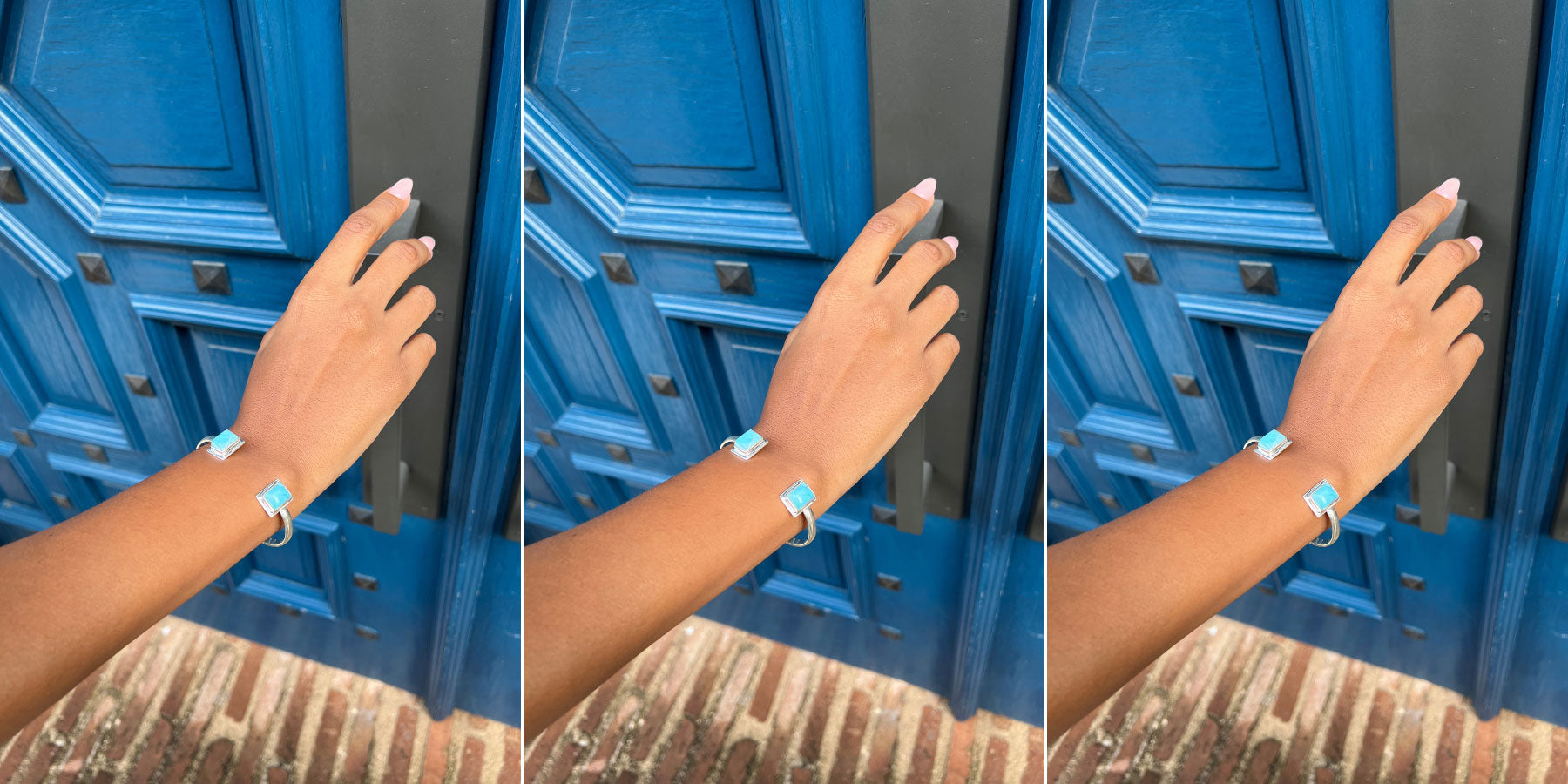Certainly, the Zona Colonial of Santo Domingo in the Dominican Republic is a historically rich and culturally significant area. Here are some interesting facts about it:
1. First European Settlement in the Americas: The Zona Colonial is home to the first European settlement in the Americas, founded by Christopher Columbus's brother, Bartholomew Columbus, in 1498. Santo Domingo served as the capital of the Spanish colony of Hispaniola, which encompassed present-day Dominican Republic and Haiti.
2. UNESCO World Heritage Site: The Zona Colonial was designated a UNESCO World Heritage Site in 1990. It is recognized for its outstanding historical and cultural value, as it preserves a remarkable collection of colonial-era buildings and urban layout.

Wearing: Remi studs + Mishti Cuff
3. Calle Las Damas: Known as the first paved street in the Americas, Calle Las Damas is located in the Zona Colonial. It is named after the ladies-in-waiting who used to stroll along the street during colonial times.
4. Alcázar de Colón. This impressive palace was built between 1510 and 1512 as the residence of Diego Columbus, son of Christopher Columbus, and his wife Maria de Toledo. It's a fine example of Spanish colonial architecture and now serves as a museum showcasing period furniture and art.

5. Fortifications and Walls. The Zona Colonial is encircled by well-preserved walls and fortifications that were built to protect the city from attacks. The Fortaleza Ozama, built in the early 1500s, is one of the oldest European-style forts in the Americas.
6. Cathedral of Santa María la Menor: Also known as the First Cathedral of the Americas, this cathedral was built between 1512 and 1540. It is a significant religious and architectural site, housing the tomb of Christopher Columbus.
7. Amber Museum: The Zona Colonial is home to the Amber Museum, which showcases the Dominican Republic's rich amber deposits. Amber with fossilized insects trapped inside is one of the museum's highlights.
8. Plaza de España: This large open square overlooks the Ozama River and is surrounded by historic buildings. It's a popular gathering place for both locals and tourists, offering stunning views, lots of restaurants and a vibrant atmosphere.

Wearing: Rye Bangle + Cecile Dangle Beads
9. Casa de Bastidas: This building, named after Rodrigo de Bastidas, one of the first Spanish conquistadors, is one of the oldest structures in the Americas. It's a testament to the area's colonial history and architectural evolution.
10. Cultural Events and Festivals: The Zona Colonial is a hub of cultural events, including music festivals, art exhibitions, and traditional celebrations. These events highlight the rich heritage of the Dominican Republic.
Restoration Efforts
The Dominican government and various organizations have invested in extensive restoration efforts to preserve the Zona Colonial's historical structures and charm. These efforts have helped maintain the area's authenticity.

The Zona Colonial is a major tourist destination in the Dominican Republic. Its narrow streets, colorful buildings, and mix of Spanish and indigenous influences offer visitors a captivating experience of the country's colonial past.
The Zona Colonial stands as a living testament to the intersection of European and indigenous cultures in the early days of the Americas, and it continues to be a place of cultural significance and historical value.

Wearing: Adeline Earrings + Fortier Cuff
As the echoes of history continue to whisper through the charming streets of Zona Colonial, and the allure of Larimar remains a symbol of our cultural pride, we extend our heartfelt gratitude. Your journey with us, exploring the depths of our heritage and the radiance of our traditions, is a testament to the connections we forge across time. If you plan to visit the Dominican Republic, the Colonial Zone is the one place you can't miss!






Leave a comment